Socks are knit in a round on 5 needles, hosiery knitting more often, starting with ornamented cuffs, or elastic bands. For one pair of women's socks consumes 100-120 grams of yarn, mens 120-150 g and baby - 70-80 g
Calculation
Measure the circumference of the leg at the ankle (figure 360) 23 cm.
For control sample of the pattern of the main part of the sock (not cuffs) determine the density of knitting.
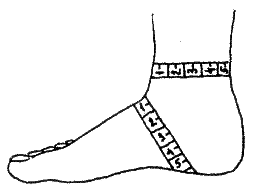
Figure 360. Measurements of leg volume
For example, the 3 loops in 1 cm spokes №2,5. Count the number of stitches needed to get started: 23 cm x 3 p - 69 p. This number (69) rounded to an even upward. (Easier if it is divided by 4 without a remainder, as the distribute loop on 4 needles).
In this example, it is better to take the number 72, then each pin will be 18 loops (socks 36 - 37-th size).
Beginning knitting sock knitting
For training tie a small sock on 40 loops. Enter them on 2 needles, put together. Free one of them, and very tight provarite 1 series rubber 1x1, simultaneously distributing the loop on 4 needles with 10 stitches on each. Thus will be entered into work 4 needles, free 5 - working. To loops 1st spokes pin pin or sew colored thread: in the future, this needle will guide the work. Then the thread end remaining in the set of loops, tie a knot with the working thread, the knitting forms a circle (edge loops are no more). Next knit on the outside of the circle clockwise 4-5 cm rubber 1x1. After completing it, go for hosiery knitting and knit 5 cm to the ankle.
Vyvazhivanie heel
Divide the knitting into 2 equal parts, and then knit loops only 2 of the spokes: the third and the fourth (loop 1-St and 2-nd in education heels are not involved). To make the work easier, first provarite loop with 2 spokes on one (3rd and 4th) and then link straight hosiery knitting cloth - height heel.
The height of the canvas is determined as follows: the number of edge loops of the cloth must equal the number of stitches on one needle. In this example, should be 10 edge (20 ranks). Thereafter, the knitting of socks pause, finished it facial near. Now the canvas you shape the heel.
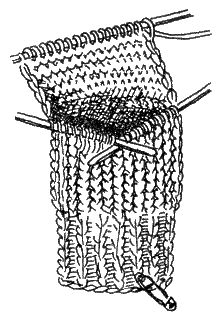
Figure 361. The distribution of loops on the heel
(the pin is marked the position of the 1st spokes)
This is achieved by control loops within the fabric. Divide the number of loops, including the edge, into three parts. If the number is not divisible by 3, then add the rest to the middle part.
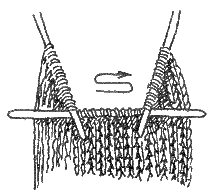
Figure 362. The division of the canvas into 3 parts
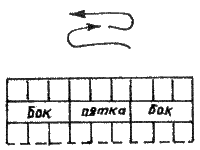
Figure 363. Scheme of dividing the canvas
In this case divide by 6 of the hinge side parts and 8 loops for the average.
Start subtraction: 1st row (wrong side) fabric - back loop: tie the first 6 loops to the side, then all the loops of the middle part, except the last one - it provarite wrong together with the adjacent hinge of the second lateral part (the remaining 5 loops of the second side part leave nepovezane).
Knitting turn. 2nd row (the front side of the cloth) of the front of the loop: remove the edge and pull tight to the needle, then tie all the loops of the middle part, except the last one - it provarite together with the adjacent loop of the first side of the front over the back wall.
Knitting turn. Repeat until all the loops provarite side parts with extreme loops the middle part (the work should end with promazyvanie the front row). On the spoke will only loop the middle part (8 loops). When knitting the heel to wool yarn, you can attach nylon or other strong thread.
When you are finished vyvazhivanie heel, nylon thread, tear off and keep knitting the same wool. Knit sock to remove at the toe. This part of a sock knit again in a circle the front loops.
Get started: knitting needle, on which there are loops of the middle part, draw a new loop on the right side of the sock from the heel edge from each edge on one face only 10 loops (figure 364).
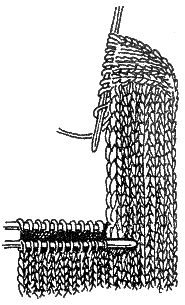
Figure 364. Hinge set for vyvazhivanija instep
Then a free needle provarite 10 stitches on first needle, then another needle 10 hinges on the second. Now free needle to enter a new loop from the edge of the canvas (as long as took the opposite) and it provarite half loops of the middle part (4 loops). The work was again 4 spokes, and on the 3rd and 4th should be more loops than the 1st and 2nd (extra loops are needed in order to not toe tied up leg lift). Now knit in a circle and at the same time take away extra loops on the 3rd and 4th needles, promazyvaya them 2 together, purl 2 row (circle). To thickening of the subtraction does not interfere with walking, do them with the edges of the foot, i.e. in the beginning of the third spoke and at the end of the fourth. When they will be the original number of stitches (10 on each), the decrease stop and knit the sock to the end of the little finger (in this example, 6 cm).
The decrease of the loops at the toe
The decrease can be done the same as on the glove, or in another way: in each row (or series) promazyvaya 2 loops together purl and at the end of another spoke - in this case, the toe turns round. Take as long as the spokes will not appear on the 1st loop. After that, tear off the thread, sew it loops, pull tight and thread end put a hook on the underside of the sock.
2. FISHNET STOCKINGS
The motif of the pattern - herringbone - alternating with triple diamonds. Eraser Golf consists of openwork diamonds and triangular ornamental strips.
For Golf you need 250 g of cotton "socks" of thread, 5 spokes № 1 or № 1,5.
A sample of 5 cm - 16 loops. Largest volume legs (shins) is 35 cm.
In order to know exactly the number of stitches, knit a sample and determine how many loops to 5 cm, then the volume of the foot multiplied by the number of loops in 1 cm.
Example: 35x16:5=112 loops.
Still, you should check whether it is divisible dialed the number of loops by the width of the pattern of Golf. In this case assumed to be 3 different patterns, so you should check are there loop patterns on the number dialed loops. For example, the initial motive is divided into 8 (figure 364), 112:8=14 motives; the second motive is divided into 16 - 112:16=7 motives, the main motive is divided into 36 (figure 365) 112:36=3 motive (4), so these 4 loops to the reverse band should be around the knitting subtract (one on each pin 2 loop), linking them together wrong.
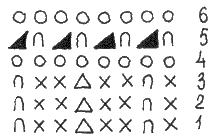
Figure 365. Scheme gum
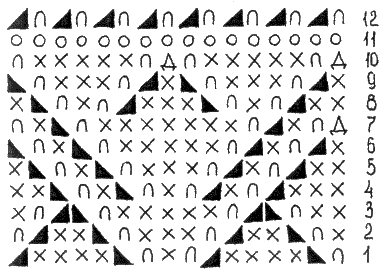
Figure 366. Scheme openwork stripes at the beginning of the shaft
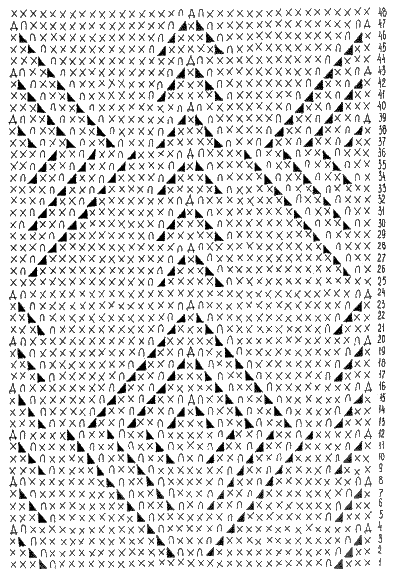
Figure 367. A scheme of the basic pattern
Because the openwork pattern of Golf is very large, the figure shows only the construction of the lace, shown after each row you should knit one front row front loops.
Such a great pattern at the ankle is very difficult to subtract, so Golf is gaining and begin to knit №1,5. These spokes laced vymazat eraser and once the whole pattern (96 rows), then knit on thinner needles (No. 1) and going to the diamond, the broad areas additionally vymazat 2 loops along the front at each side. Thin spokes vymazat 96 series and again at the widest point of the diamond provyazat 2 loops along the front on each side, so reaching the heel, subtract 12 loops (2 times, every row has 6 loops). On each spoke there are 24 loops.
When knitting the heel should have a large pattern so that it was in the middle towards the heel (center, shown in the figure, is located on the front of the Golf course). On 2 needles knitting the heel, the heel decrease is made on the same needles which knit the heel, but in this case at the beginning of the 4th spoke of the first 2 stitches knit purl, then 2 loops provyazat with removal at the end of the 1st spoke on the third and fourth of the penultimate loop provyazat along the front, the last 2 stitches knit purl. The lower part of the foot knit the front stitch, the upper part in accordance with a pattern.
On the toe, the loops diminish in the same way as in the previous case, the only difference between uravneniyami this time 2 reverse, not the front loop.
Yes - red-battosai the yarn front. Batik was prepared as follows: the yarn is wound in a coil and in 3 places at the same distance tie cotton thread, then dye the whole skein in light red (pink) color.
When yarn is dyed, rinse it and paint again, dropping the solution of only one end of a coil, the other end is suspended. This time is added to the solution is more paint to get the red or dark shade of pink.
When the average tone is obtained, rinse the yarn again and paint the third time the other end of the strand. This time add all the paint to get a bright shade of red. The yarn after dyeing rinse, if desired, adding a little vinegar. Then remove the bandages until until the water is no longer colored.
Then: 3 rows of black yarn; 7 series - rustic gray yarn; 3 rows of black yarn; 3 rows - red-battosai yarn; 3 rows -1 black yarn; 7 series gray yarn, etc.
When the length of the course reaches 15 cm, the following 8 cm continue to knit with the decrease, knit the heel the same as in the previous pair of Golf, do the same subtraction on the toe of the feet.
4. USEFUL TIPS
Reverse loops in socks and socks knit by the scheme,
Before starting, don't forget to knit control sample. Not in a hurry to get to the product. Without a control sample, you may incorrectly associate a pattern and "get" in size



